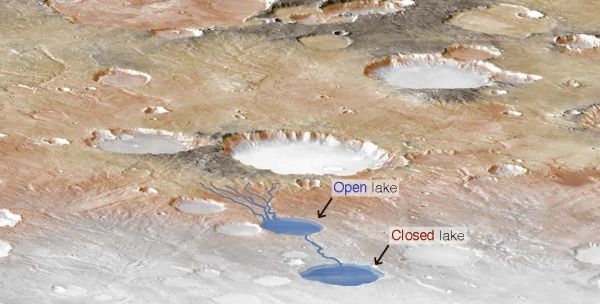A new study from The University of Texas at Austin is helping scientists piece together the ancient climate of Mars by revealing how much rainfall and snowmelt filled its lake beds and river valleys 3.5 billion to 4 billion years ago.
The study, published in Geology, represents the first time that researchers have quantified the precipitation that must have been present across the planet, and it comes out as the Mars 2020 Perseverance rover is making its way to the red planet to land in one of the lake beds crucial to this new research.
The ancient climate of Mars is something of an enigma to scientists. To geologists, the existence of riverbeds and paleolakes — eons-old lake basins — paints a picture of a planet with significant rainfall or snowmelt. But scientists who specialize in computer climate models of the planet have been unable to reproduce an ancient climate with large amounts of liquid water present for long enough to account for the observed geology.
“This is extremely important because 3.5 to 4 billion years ago Mars was covered with water. It had lots of rain or snowmelt to fill those channels and lakes,” said lead author Gaia Stucky de Quay, a postdoctoral fellow at UT’s Jackson School of Geosciences. “Now it’s completely dry. We’re trying to understand how much water was there and where did it all go.”
Read more at University Of Texas At Austin
Image: New research from The University of Texas at Austin has used dry Martian lake beds to determine how much precipitation was present on the ancient planet. CREDIT: University Of Texas At Austin


